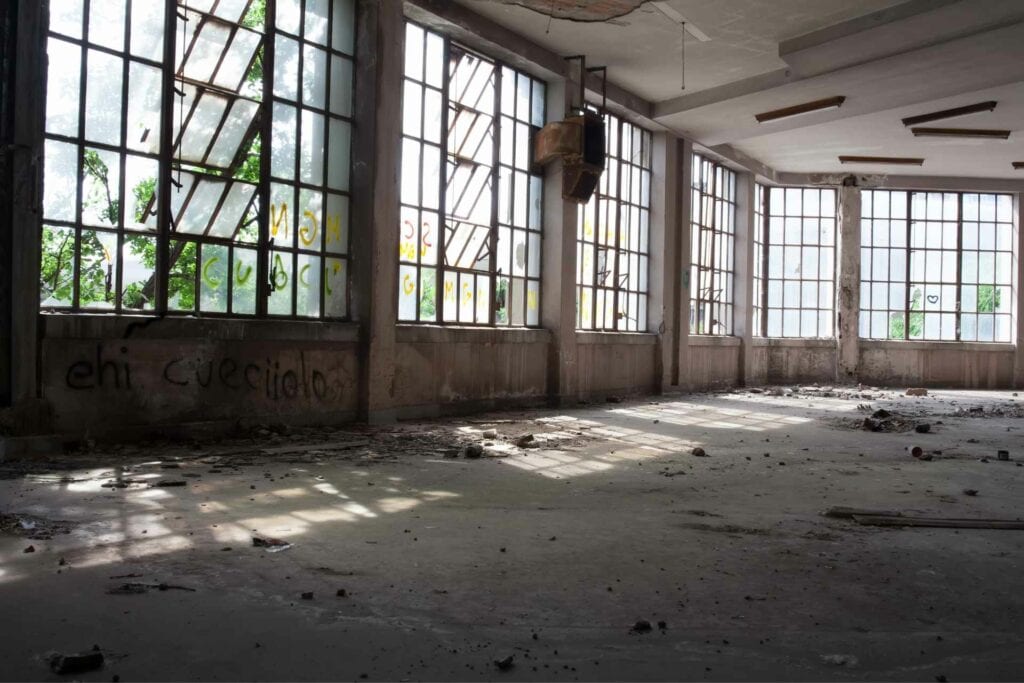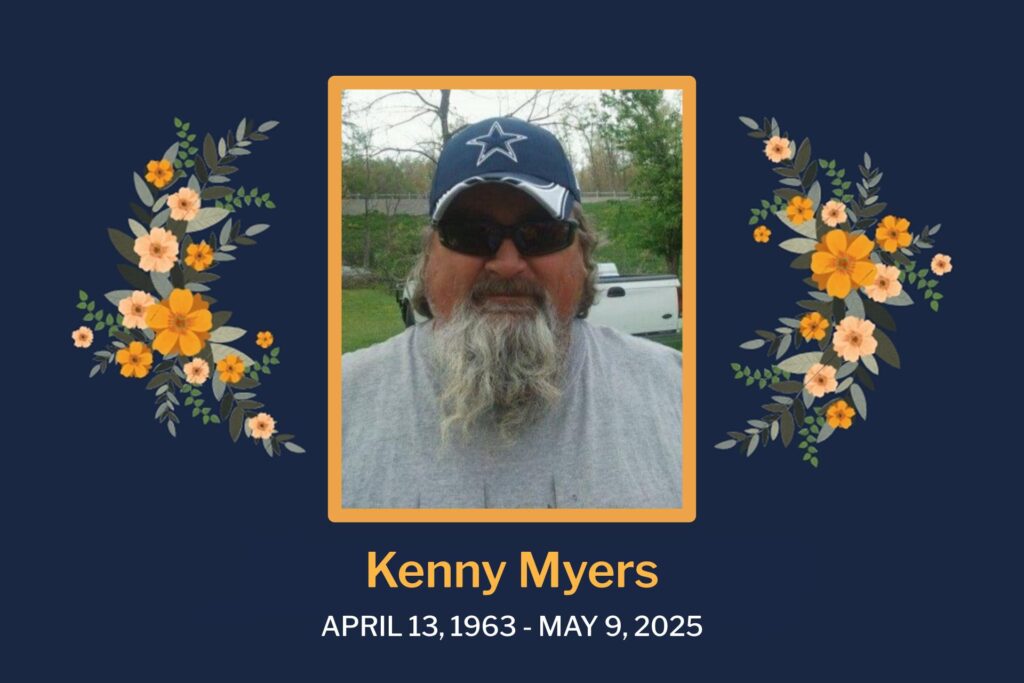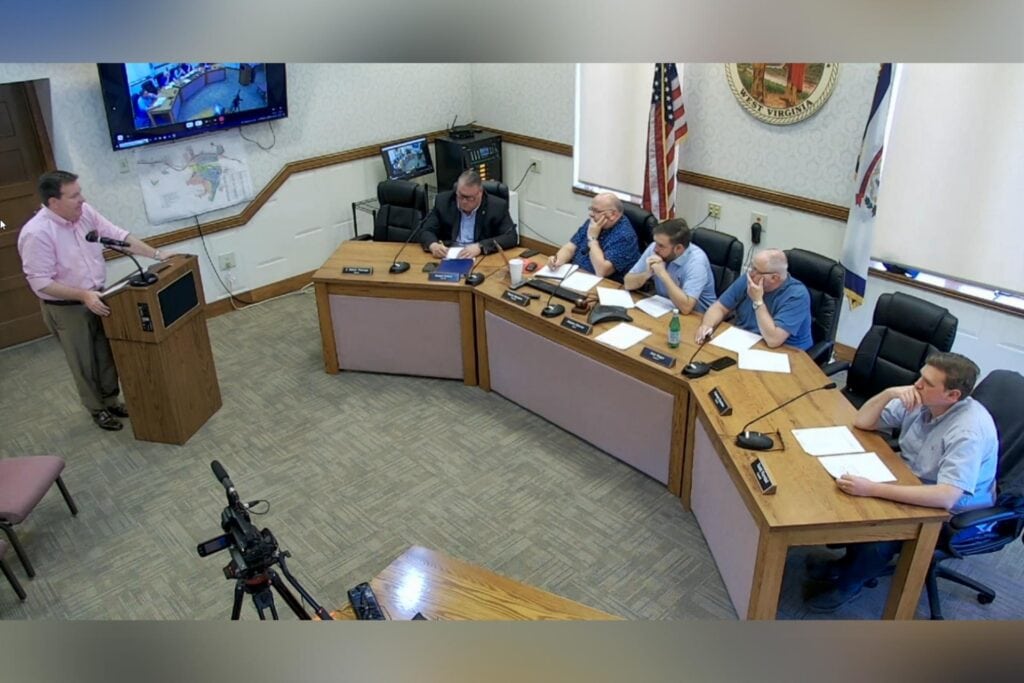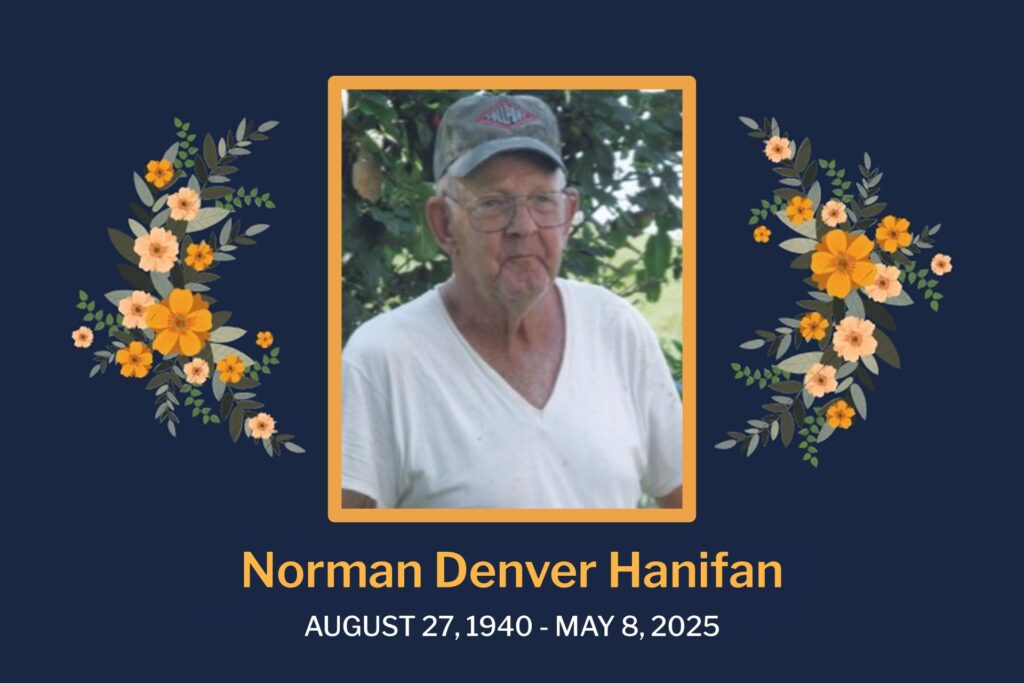Editor’s note: This story was originally published by Mountain State Spotlight. Get stories like this delivered to your email inbox once a week; sign up for the free newsletter at https://mountainstatespotlight.org/newsletter
By Emily Allen, Mountain State Spotlight
From his third-story office window in Fairmont City Hall, City Planner Shae Strait has a good view of houses and businesses beyond Jackson Street, and rolling green hills embedded with parking lots and skinny driveways.
“What I love about my view — not just the trees and the historical properties, but …”
Strait points to a gray and white house that was once so dilapidated, the city thought the only option was demolition. But then, a private developer noticed the property and agreed to redevelop it. Now, that developer is planning on renting it out soon.
“If it wasn’t for that guy, coming along and believing in that building, we would’ve had to tear it down,” Strait said.
These sites are all over Fairmont: vacant properties in need of either demolition or investors. In 2016, the city came up with a comprehensive list of 125 buildings to target.
Fairmont has addressed — using the city’s general fund or with help from private developers — more than 65% of the properties that residents identified more than five years ago. But there are still hundreds of buildings, commercial and residential, throughout the 18,000-person city of Fairmont that are still vacant and, for one reason or another, are so dilapidated that they become problematic.
The issue isn’t unique to Fairmont. An 2018 estimate from a program at WVU for “BAD” buildings, or “Brownfield, Abandoned and Dilapidated” properties, reckons there are at least 17,000structures statewide that need to be demolished or extensively renovated.
“There’s not a community that is not dealing with this issue,” WVU BAD Buildings Director Carrie Staton said. “They are in every community of every size.”
In response, West Virginia lawmakers have enacted a patchwork of laws giving local governments the authority to handle these properties. During the last session, the Legislature even went as far as to create a pilot program, run by the West Virginia Department of Environmental Protection, to establish a statewide demolition fund that cities and counties can use for locally condemned properties.
But lawmakers haven’t given this program any money. And because demolition and redevelopment are expensive, smaller, more rural and cash-strapped communities don’t have immediate access to funding to fix these properties on their own.
A problem that fuels itself
For those who work on addressing vacant buildings, it’s about more than just an eyesore.
“Environmentally, a lot of times there’s asbestos and lead paint,” Staton said. “At a severe level of dilapidation, there’s a more immediate threat that it could fall down and hurt someone.”
There’s no one root cause, either. Many attribute the issue to West Virginia’s declining economic sector and population loss. When elderly residents die and leave their property to heirs out-of-state, those heirs might not realize what they’re getting, or they may choose to leave the building vacant.
Disasters like flooding or arson can cause a structure to become a problem fast. Other times, someone might leave a residence because they can’t afford mortgage payments. The bank might ultimately decide against following through with a foreclosure, to avoid liability or a responsibility to fix up a home, leaving the property in limbo.
There also are hundreds of properties held up through the “tax sale” process. That’s when a home that falls behind on its taxes ends up being confiscated by the local sheriff’s department. If no one redeems or buys the property, it ends up forgotten on a lengthy list of structures in the state auditor’s office.
“They’re not all dilapidated for the same reasons, they don’t all need the same resources to address the dilapidation,” Strait said. “So to address the problem and the underlying symptoms, we need a multitude of approaches.”
Several laws and little funding
Every year, West Virginia lawmakers pass new laws to address their local communities’ problems with vacant properties.
Seven years ago, they authorized counties and cities to create their own “land reuse agencies,” which are called land banks in most other states. Before this, communities like Huntington had successfully piloted using this approach to address vacant properties.
More recently during the 2021 legislative session, the Legislature passed a law authorizing city and county governments to take banks to court when they start the foreclosure process on a home and don’t finish, leaving a building vacant. They also agreed to create a law to offer bigger tax credits for the preservation and redevelopment of historic properties. In Fairmont, Strait said this has helped the redevelopment of Fairmont’s Cook Hospital and the former Miller School.
In addition to advocacy groups and programs tackling the issue outside government — most prominently the WVU BAD Buildings program, which helps volunteers in West Virginia communities identify and make plans for abandoned and dilapidated properties, but also WVU’s Land Use and Sustainable Development Law Clinic, the Abandoned Properties Coalition and the West Virginia Community Development Hub — there are people trying to tackle this issue, from the state’s largest communities to its smallest.
But funding opportunities are more sparse.
For residential properties, programs like West Virginia Housing Development Home offer seven-year loans to cities and counties who want to take down a house. Funding from the U.S. Department of Housing and Urban Development for community development, which the state and several designated communities receive, can also help cover a handful of projects at a time. Gov. Jim Justice most recently doled out $1.7 million in these federal Community Development Block Grants to eight cities and county commissions for demolition projects.
But for smaller communities and those who can’t qualify for loans, it’s hard for West Virginia’s most cash-strapped places to deal with the issue.
“We’re just trying to look for resources that would fund this program more robustly,” said Patty Hickman.
Hickman directs the Land Stewardship Program, a small, state-run nonprofit that the Legislature created about eight years ago to address abandoned industrial and commercial properties, for economic development and environmental concerns.
She and others have asked lawmakers to devote funding to this problem, but she wasn’t involved in the latest effort which offers up future funding for the problem. Senate Bill 368 establishes the WVDEP-run “Reclamation of Abandoned Properties” program and redirects future fees for landfill closures to the fund. Hickman says this provision, while it won’t provide money for at least a few years until landfills are closed, could potentially create a continuous and more reliable fund in the future for the problem.
“You don’t get to the finish line without getting to the starting line,” said Sen. Chandler Swope, R-Mercer, the bill’s lead sponsor.
Fees for landfill closures are only a small part of the overall plan, according to Swope. They amount to a few million dollars a year, whereas some estimates place statewide needs for demolition anywhere from $400 million to $500 million total.
He’s hoping that the federal government will allow federal COVID relief dollars for economic development to go toward addressing dilapidated structures, or that a multi-billion dollar infrastructure bill in Congress will include similar provisions. The senator says he’s also advocating for a piece of any upcoming state budget surpluses.
“I’m going to be waving my hand in the air, saying, ‘give me money for this fund,’” Swope said.
Where we are now
In Fairmont, efforts to address dilapidated structures are diverse. For some projects, the city is doing the work itself, like in the redevelopment of a historic Masonic Temple across the street from Strait’s office, and the old City Hall and Fire Department further down Monroe Street.
In others, private developers saw potential and demolished or redeveloped buildings themselves.
A private-public partnership has redeveloped a block of properties less than half a mile away from City Hall, including buildings which now host The Rambling Root pub and Noteworthy Sweets candy shop. On the corner of these properties is the old YMCA, which the partnership is working on finding a redeveloper for now.
But as the city checks off each property they identified back in 2016, more are added to the list each year. Strait says the city of Fairmont prioritized and invested in the issue using their own general funds. Not every community can do this.
“For West Virginia communities, especially our smaller, more socioeconomically impacted areas, the funding is the critical part,” Strait said. “It’s easy to deal with those things when you have a growing economy, you have dollars coming in, but when you’re shrinking, and you have everything left in place from that larger economy, it’s very difficult to generate the revenue to address it.”
And as West Virginia continues to watch its population decline — the U.S. Census in 2020 found the state had the largest decline in people over the last decade, at roughly 3.2% — it’s likely the problem and the potential of these vacant properties will only grow.
Reach reporter Emily Allen at emilyallen@mountainstatespotlight.org.




















